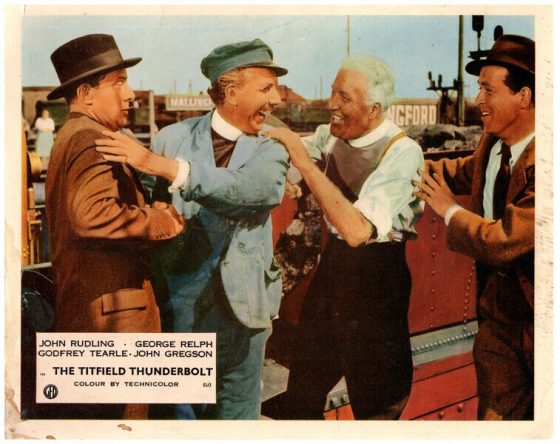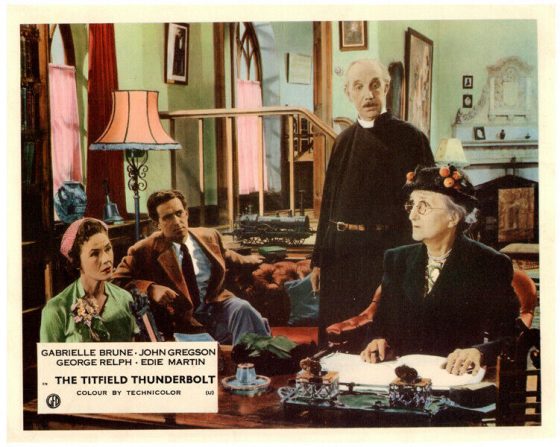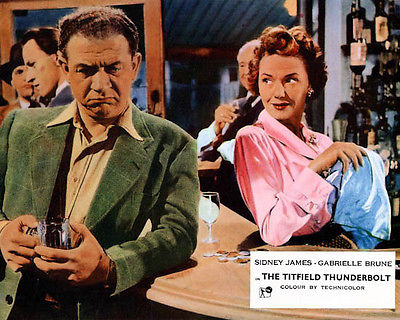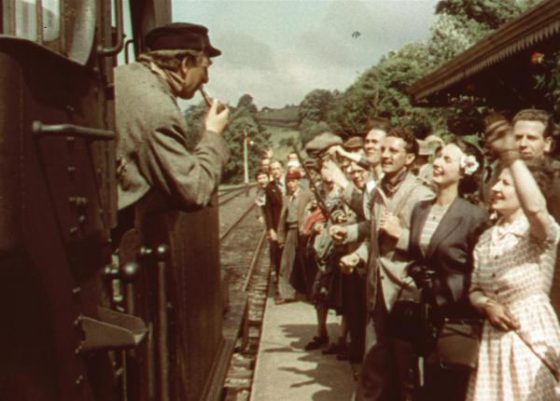This film seems to have acquired classic status among film fans, railway enthusiasts, nostalgia fans and almost everyone young and old.
It was in Technicolor which was a great boost and made the English countryside in summer look so lovely – as indeed it always does.
I always think that if I lived overseas and was homesick – as I frequently would be – I would watch this film again and again. It just evokes a feeling of the quirkiness of life in England at any time really but the storyline fits the fifties perfectly.
Thinking of what I have just written above, it occurs to me that watching this film would make me even more homesick
Just enjoy the Trailer Below – It gives us a taste of the treat we are in for :-

I do remember holidaying down in St Albans with my girl friend at the home of my family where we went as often as we could – this would be in the early to mid Sixties – and there was a Film Club in the Town Hall in St Peter’s Street. While we were there they were showing ‘The Titfield Thunderbolt’. In an immediate fit of excitement I rushed to buy tickets only to find out that they had sold out days before.
What a dis-appointment that was – I would think that it would have been a really great venue

ABOVE – The old Titfield Thunderbolt is brought back into services to save the day


I always think that even when in his early career as he would be here, that he was self confident enough to hold his own in any scene with any actor – he was not overawed in any way. I have watched him in many films and noticed this and admired him for it

An early film for Sid James – ABOVE

Naunton Wayne, Stanley Holloway and Gabrielle Brune enjoy a drink as the train travels along it’s route.
In the spring of 1952 a car was making its way through the lanes of the Somerset countryside. Seated in the car were film director Charles Crichton and cinematographer Douglas Slocombe. The pair were on the look-out for the perfect country railway track, a possible location for the latest Ealing Comedy. Everything was already set; the stars had been chosen, the screenplay and the scripts were being finely tweaked in Ealing, and filming was already scheduled for the summer of 1952 with hopes that the film would be completed and released by the spring of the following year. But the production didn’t have its most important ingredient: the film’s location.
The story of The Titfield Thunderbolt actually goes back to the spring of 1951, when regular Ealing writer T. E. B. Clarke (Hue and Cry, 1947, Passport to Pimlico, 1949, The Blue Lamp, 1950 and The Lavender Hill Mob, 1951) was on holiday in North Wales: “I found myself standing on a station of the narrow-gauge Talyllyn Railway, blinking incredulously at a notice which said, ‘Volunteer Platelayers Required’. Curiosity had to be satisfied, and my inquiries brought the information that this was a private line run through the summer months by railways enthusiasts from all parts of the country, who spent their holidays as engine-drivers, firemen, guards or booking clerks. Thus was born the idea of The Titfield Thunderbolt”
After seeing Clarke’s draft proposal, with some elements influenced by the Talylln railway manager’s published book Railway Adventure (1953), Ealing boss Michael Balcon green lit the project.
There was one slight problem, however, trying to find a big enough location – one that included a good few miles worth of track as well as a train station. To top it all off they needed to have classic British countryside as a backdrop (perfect for Technicolor). They seemed to be asking too much.
The location ended up being a seven mile stretch of line between Limpley Stoke and Camerton. When Crichton and Slcombe recced the disused line and train station they realised they had found their Titfield. Slocombe, armed with a 16mm Ben & Howell colour camera shot a number of sequences in the area, giving a general idea of the surroundings for the rest of the team back at Ealing. That footage still survives today.

Filming lasted 6 weeks from June into July with members of the general public straining to see what was happening in and around Limpley Stoke. Crowds were held back at Britsol Temple Meads as the crew filmed sequences which doubled as Titfield’s local town. Filming was also frustrating at times; due to the very bright, sunny weather they had throughout the summer.
The plan was simple: Crichton wanted an idealised country village set within an even more idealised English countryside, which Slocombe delivered. Taking possible influences from the famous national railway posters, Slocombe gave The Titfield Thunderbolt the essence of nostalgia that both Balcon and Crichton wanted.
Slocombe later said “It was a fun film to make. it was fun because we had our own railway. Also, one could feel when making it that this was a bit of old England that was going forever – but I was very conscious of the beauty of the English countryside.”
Filming on location also gave Slocombe the chance to free himself from the prying eyes of Technicolor’s ‘quality control team’.
What we end up with is a beautiful film – not Ealing’s best comedy, but most certainly their most beautiful and, if anything, it symbolised the true spirit of what Michael Balcon wanted to do in the later history of Ealing Studios: to celebrate the lost English countryside.
The railway has always had an incredibly important place in the history of cinema. Many films have been celebrated, but there is only one film that has been celebrated by film and railway enthusiasts alike, Charles Crichton’s The Titfield Thunderbolt
Hi
I was thinking of paying the extra to get special features on this great film. is it worth it.?
Robert. Thanks for your comments and I think, like you, that it would be really good to get the extra features. What would interest me, is any behind the scenes film that may have been taken at the time particularly on location on those lovely summer days that come over so nostalgically in the film.
Thanks.I got it and it was worth it.great extras on it but slocombe’s footage is fantastic.